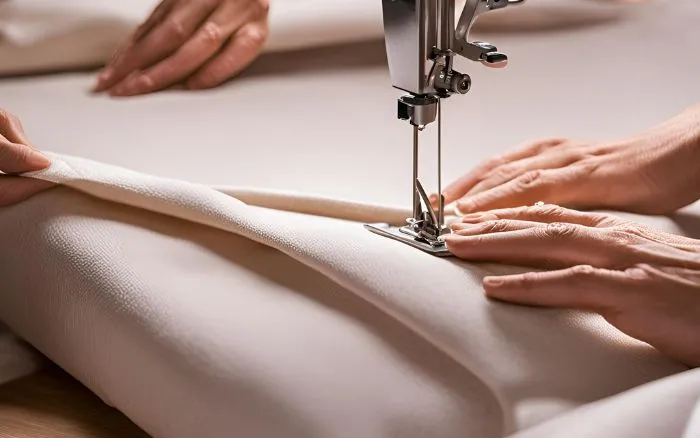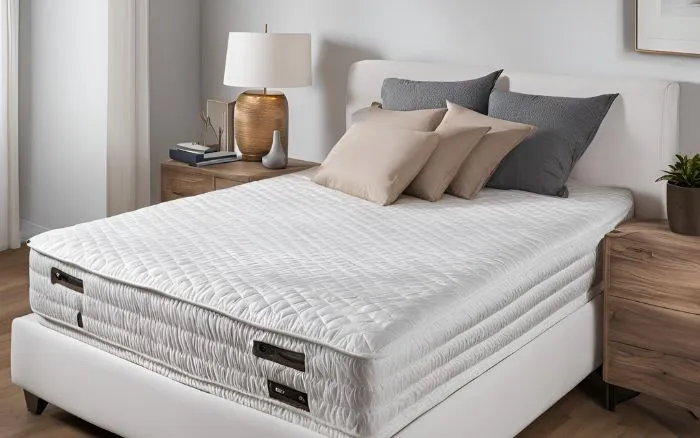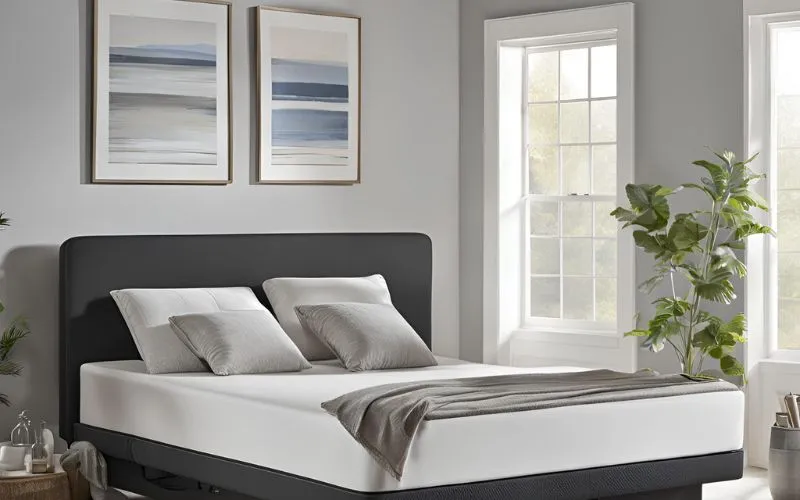Understanding the Technology of Temperature-Regulating Mattresses

Introduction to Temperature-Regulating Mattresses
Welcome to the world of temperature-regulating mattresses, where comfort meets innovation. A good night’s sleep is essential for overall well-being, and the right mattress plays a crucial role in achieving that. Temperature-regulating mattresses have revolutionized the way we experience comfort during sleep, offering a solution to the age-old struggle of maintaining an ideal sleep temperature. In this comprehensive guide, we’ll delve into the science, benefits, technology, and maintenance of temperature-regulating mattresses to help you make informed decisions for a restful night’s sleep.
What Are Temperature-Regulating Mattresses?
How Do Temperature-Regulating Mattresses Work?
Temperature-regulating mattresses are designed to provide a comfortable sleep environment by managing the heat and moisture levels while you sleep. Here’s a more detailed look at how these innovative mattresses work:
- Phase Change Materials (PCMs): These mattresses often incorporate PCMs, which are substances that can absorb, store, and release heat as they change from solid to liquid and vice versa. PCMs help in regulating the temperature by absorbing excess heat when you are too warm and releasing heat when you are too cold. This phase change process helps maintain a balanced and consistent temperature throughout the night.
- Airflow and Breathability: Temperature-regulating mattresses are designed with enhanced airflow and breathability features. These features allow for better ventilation, moisture-wicking, and heat dissipation, keeping you cool and dry during the night.
- Zoned Construction: Some temperature-regulating mattresses have zoned constructions that provide targeted support and temperature regulation. By using different materials and technologies across various zones, these mattresses offer personalized comfort and temperature control for different parts of the body.
- Smart Fabric Technology: Advanced temperature-regulating mattresses may utilize smart fabric technology, which actively responds to changes in body temperature and adjusts its properties to maintain a comfortable microclimate around the body.
- Integrated Cooling Systems: Certain high-tech temperature-regulating mattresses come with integrated cooling systems, such as water-based or air-based technologies, to actively cool the sleeping surface and maintain an optimal temperature for restful sleep.
Benefits of Using Temperature-Regulating Mattresses
Improved Sleep Quality
When it comes to overall health and well-being, the quality of sleep plays a crucial role. Here are some ways in which using a temperature-regulating mattress can lead to improved sleep quality:
- Optimal Body Support: Temperature-regulating mattresses provide optimal support to the body, promoting better posture and reducing discomfort during sleep.
- Enhanced Comfort: The ability of these mattresses to adjust to individual body temperature ensures a comfortable sleep environment, reducing the likelihood of waking up due to overheating or feeling too cold.
- Reduced Sleep Disruptions: By maintaining a consistent and comfortable sleeping temperature, these mattresses help minimize sleep disruptions, allowing for longer periods of restful sleep.
- Pressure Relief: The adaptive nature of temperature-regulating mattresses offers pressure relief, particularly for individuals with joint pain and muscle tension, contributing to a more restful sleep experience.
Regulation of Body Temperature
In addition to improving sleep quality, temperature-regulating mattresses play a crucial role in regulating body temperature. Here are some key aspects to consider:
- Phase Change Materials (PCMs): These mattresses are designed with PCMs that actively absorb, store, and release heat based on the sleeper’s body temperature, resulting in a comfortable and consistent sleeping environment.
- Breathable Fabric Technology: Many temperature-regulating mattresses utilize advanced breathable fabric technology to enhance airflow and prevent heat build-up, contributing to a cool and refreshing sleep experience.
- Thermal Neutral Zone: These mattresses are engineered to maintain the ideal thermal neutral zone, where the body neither gains nor loses heat, promoting optimal sleep conditions.
Relief for Hot Sleepers
Are you someone who struggles with overheating during the night? Hot sleepers often find it challenging to get restful sleep due to the discomfort caused by high body temperature. However, there are several effective strategies that can provide relief for hot sleepers and improve their overall sleep quality. Let’s explore some practical tips and solutions for hot sleepers:
- Choose breathable bedding materials such as bamboo or cotton to promote airflow and reduce heat retention.
- Opt for a temperature-regulating mattress, specifically designed to dissipate heat and keep you cool throughout the night.
- Use moisture-wicking mattress protectors and sheets to prevent moisture buildup and maintain a dry sleeping environment.
- Explore cooling pillows and pillowcases that offer enhanced ventilation and heat dissipation to keep your head and neck comfortably cool.
- Consider implementing a bedroom cooling system, such as a fan or air conditioning, to create a refreshing sleep environment.
By incorporating these tips into your sleep routine, you can create a more comfortable and cool sleep environment, effectively addressing the challenges faced by hot sleepers. Say goodbye to restless nights and welcome rejuvenating, uninterrupted sleep.
Factors to Consider When Choosing a Temperature-Regulating Mattress
Material Composition
When it comes to temperature-regulating mattresses, the material composition plays a crucial role in determining the overall performance and comfort. Here, we’ll delve into the various materials commonly used in temperature-regulating mattresses, shedding light on their unique properties and benefits.
Memory foam is a popular choice for temperature-regulating mattresses due to its ability to contour to the body, providing excellent support and pressure relief. It also has heat-absorbing properties, making it suitable for maintaining a comfortable sleeping temperature.
Natural latex mattresses are known for their breathability and natural cooling properties. Latex is derived from rubber trees and offers a responsive and bouncy feel, promoting airflow and heat dissipation for a cooler sleeping experience.
Gel-infused foam mattresses combine memory foam with gel beads, enhancing the heat-regulating properties of the mattress. The gel beads help dissipate heat, preventing discomfort caused by overheating during the night.
Hybrid mattresses often incorporate a combination of memory foam, latex, and innerspring coils to provide a balance of support, contouring, and airflow. This combination allows for temperature regulation while offering the benefits of different materials.
Plant-based memory foams and latex offer a more environmentally friendly option for temperature-regulating mattresses. These materials are designed to provide similar benefits to traditional foams while reducing the environmental impact.
For those seeking a natural and sustainable option, organic materials such as cotton, wool, and natural latex can be used in temperature-regulating mattresses. These materials promote breathability and are free from synthetic chemicals, enhancing comfort and peace of mind.
Breathability and Airflow
When it comes to choosing a temperature-regulating mattress, one of the key factors to consider is its breathability and airflow. This aspect plays a crucial role in maintaining a comfortable sleep environment and regulating body temperature throughout the night.
Here are some key points to consider when evaluating the breathability and airflow of a mattress:
- Material: The material composition of the mattress directly impacts its breathability. Materials such as natural latex, open-cell memory foam, and gel-infused foams are known for their excellent ventilation and airflow properties.
- Structural Design: The design of the mattress, including the arrangement of layers and the use of airflow channels, affects how effectively air can circulate through the mattress.
- Cover Fabric: The fabric used in the mattress cover also contributes to its breathability. Moisture-wicking and breathable fabrics, such as Tencel, can enhance the overall airflow of the mattress.
To ensure a mattress provides adequate breathability, it’s important to look for features that promote airflow, prevent heat retention, and minimize moisture accumulation. These features can contribute to a cooler and more comfortable sleep experience, particularly for individuals who tend to sleep hot.
Customization Options
When choosing a temperature-regulating mattress, customization options play a crucial role in ensuring the best sleep experience. Here are the key customization options to consider:
- Adjustable Firmness: Look for mattresses that offer customizable firmness settings to accommodate individual preferences. Whether you prefer a softer or firmer feel, adjustable options allow you to find the perfect balance.
- Dual-Sided Design: Some temperature-regulating mattresses feature a dual-sided design, allowing partners with different firmness preferences to each have their own customized sleep surface.
- Additional Layers and Padding: Explore mattresses that offer customizable additional layers or padding options for targeted comfort and support. This allows you to tailor the mattress to your specific needs, such as pressure relief or enhanced spinal alignment.
Understanding the Technology Behind Temperature Regulation
Phase Change Materials (PCM)
Phase Change Materials (PCM) are substances with a high heat of fusion, which means they can store and release large amounts of energy. They are used for temperature regulation in various applications, including:
- Building insulation – PCM can be incorporated into building materials to regulate indoor temperatures and reduce energy consumption.
- Textiles – PCM-infused fabrics can provide comfort by absorbing and releasing heat based on the body temperature and the external environment.
- Food packaging – PCM can help maintain the desired temperature for perishable goods during transportation and storage.
PCM work by absorbing and releasing heat during the process of changing phases (solid to liquid and vice versa). This property makes them highly effective in stabilizing temperatures and reducing the reliance on traditional heating and cooling systems.
There are various types of PCM, including organic, inorganic, and eutectic mixtures, each with its unique properties and applications. Some common examples of PCM include paraffin wax, salt hydrates, and fatty acids.
Gel-Infused Foam
Gel-infused foam is an advanced type of memory foam that has been infused with gel beads or gel particles. This innovative technology enhances the supportive and cooling properties of traditional memory foam, making it an ideal choice for those seeking a mattress or pillow that effectively regulates temperature.
Here are some key features and benefits of gel-infused foam:
- Improved Heat Dissipation: The gel infusion helps to disperse body heat more effectively than standard memory foam, resulting in a cooler sleep surface.
- Pressure Relief: Gel-infused foam provides exceptional pressure relief by conforming to the body’s natural contours, reducing the risk of discomfort and pain.
- Enhanced Durability: The addition of gel particles contributes to the overall durability of the foam, ensuring long-lasting comfort and support.
- Reduced Motion Transfer: Gel-infused foam minimizes motion transfer, allowing sleepers to enjoy uninterrupted rest without disturbance from partner movements.
Furthermore, gel-infused foam is often used in mattress and pillow construction to create a comfortable and supportive sleep surface. Its ability to adapt to the body’s shape and regulate temperature makes it a popular choice for individuals seeking a restful night’s sleep.
Airflow Channels and Ventilation
Proper airflow channels and ventilation are crucial aspects of temperature regulation in various products and environments. It plays a significant role in maintaining optimal conditions and enhancing the overall performance of temperature-regulating technologies. Let’s delve into the details of airflow channels and ventilation:
Airflow channels are designed to facilitate the movement of air within temperature-regulating materials and products. These specialized channels create pathways for air to circulate, allowing for efficient heat dissipation and moisture regulation.
- Uniform Air Distribution: By incorporating airflow channels, the distribution of air across the material’s surface becomes more consistent, preventing hotspots and ensuring balanced temperature regulation.
- Enhanced Breathability: The presence of airflow channels promotes breathability, allowing for the exchange of fresh air while expelling moisture and heat buildup.
- Improved Comfort: Products equipped with well-engineered airflow channels offer enhanced comfort by effectively managing temperature and humidity levels.
Ventilation systems are integral components that work in conjunction with airflow channels to optimize temperature control. These systems facilitate the intake and outflow of air, contributing to the overall efficacy of temperature regulation.
- Regulated Airflow: Ventilation systems ensure controlled airflow, preventing stagnation and maintaining an environment conducive to effective temperature management.
- Moisture Control: Efficient ventilation helps in the removal of excess moisture, reducing the risk of condensation and mold formation.
- Odor Mitigation: Proper ventilation minimizes the accumulation of odors by facilitating the circulation of fresh air and the expulsion of stale air.
By optimizing airflow channels and ventilation systems, temperature-regulating technologies can achieve superior performance, durability, and user comfort.
Maintaining and Caring for Temperature-Regulating Mattresses
Cleaning and Stain Removal Tips
- Vacuum the mattress regularly to remove dust and debris.
- Spot clean stains using a mild detergent and a damp cloth.
- Avoid using harsh chemicals that could damage the mattress fabric.
- Consider using a mattress protector to prevent stains and spills.
Recommended Practices for Mattress Care
Proper care and maintenance of your mattress are essential for ensuring longevity and comfort. Here are some recommended practices to help you care for your mattress:
- Rotate Your Mattress Regularly: To promote even wear and prevent sagging, rotate your mattress every 3-6 months. This simple practice can extend the life of your mattress and ensure consistent support.
- Use a Mattress Protector: Investing in a quality mattress protector can safeguard your mattress from spills, stains, and dust mites. A waterproof and breathable protector will also keep your mattress hygienic and in top condition.
- Air Out Your Mattress: Every few months, remove the bedding and let your mattress breathe. This helps to release any trapped moisture and odors, keeping your mattress fresh and clean.
- Vacuum and Spot Clean: Regularly vacuuming your mattress can help eliminate dust and allergens. Additionally, promptly treat any stains or spills with a gentle cleaning solution to prevent them from setting in.
- Be Mindful of Bed Frame Support: Ensure that your mattress is properly supported by a sturdy bed frame and center support. This helps to maintain the structural integrity of the mattress and prevents premature wear.
- Professional Cleaning: Consider professional mattress cleaning every few years to deep clean and sanitize your mattress. Professional cleaning can remove deep-seated dirt and allergens, ensuring a hygienic sleeping environment.
Conclusion
In conclusion, temperature-regulating mattresses have redefined the sleep experience by offering a harmonious blend of comfort, technology, and health benefits. With their ability to promote restful sleep, regulate body temperature, and provide relief for hot sleepers, these mattresses represent a significant advancement in sleep innovation. As you embark on the journey of selecting a temperature-regulating mattress, consider the diverse technology, materials, and maintenance aspects to make an informed choice for a revitalizing and comfortable sleep environment.




